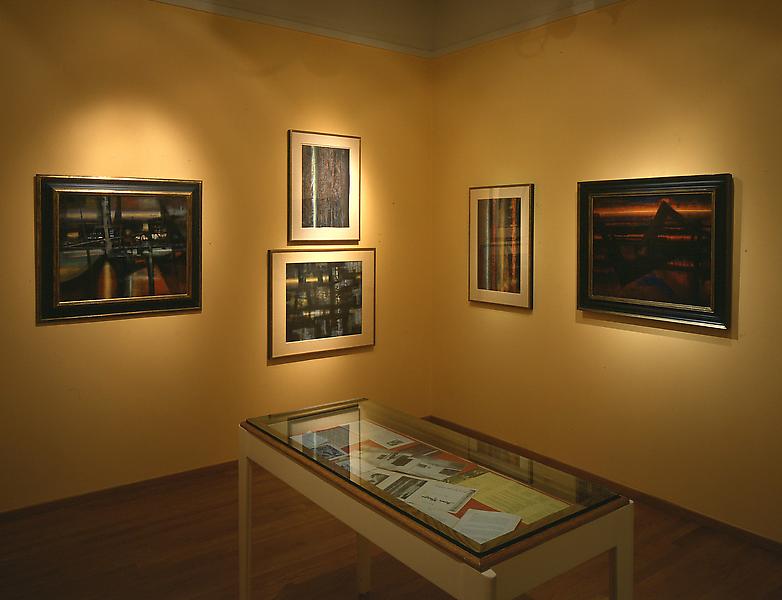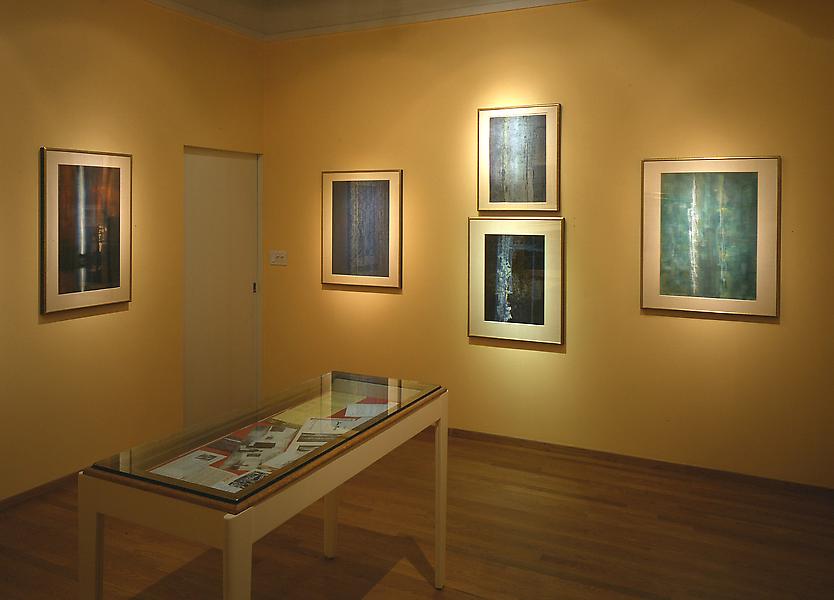Boris Margo: Divine Light, 1950-1952 features fifteen paintings on paper and canvas from the early 1950s. Known for his early use of decalcomania and his development of the print process "cellocut", Margo emerged in the 1950s with works in which the most prominent image is a thin vertical or horizontal line, set alone or repeated. These works, a departure from his organic Surrealist abstractions of the 1930s and 1940s, have a spiritual luminosity, like neon or lightening streaks seen through webbings or mists. Margo, living in a shack on the isolated dunes of Provincetown, Massachusetts, was greatly inspired by the environment and, particularly, the changing sky with vapor trails, and dramatic sunsets.
June 4 – August 20, 1998
Artists
Press Release
Boris Margo, born in Wolotschisk, Russia in 1902, studied at the Polytechnik of Art, Odessa and The Analytical School of Art, Leningrad with avant-garde artist Pavel Filinov. He came to the United States in 1930, working predominantly in New York City and Provincetown. Margo was represented by the Betty Parsons Gallery from 1947 to 1962 and actively exhibited in the United States and Europe. He is represented in numerous museum collections including the Art Institute of Chicago, The Metropolitan Museum of Art, The Museum of Modern Art, New York, The National Museum of American Art, Washington, DC, San Francisco Museum of Art, and the Whitney Museum of American Art.
Michael Rosenfeld Gallery is the exclusive representative of the Estate of Boris Margo.



